First of all – what is sciatica?
The health condition is recognizable by a sharp pain that extends from the lower back to the feet, through the legs. People who experience these symptoms have a problem with the sciatica nerve. You can feel burning and tingling, and the most serious symptom can be considered the loss of nerve function. It manifests itself during some strain, as well as in an awkward position. Most often it appears suddenly.

The disorder occurs as a result of daily wear and tear on the joints. It takes a long time for the layers to wear away, and the symptoms are absent until it reaches the nerve itself. Pain caused by these medical conditions can easily disrupt sleep. One of the solutions to the problem is the correct position during sleep. Correct body position will relieve pain and reduce pressure on the sciatic nerve.
Poor body position puts a lot of pressure on the musculoskeletal system. This is why it is recommended to sleep on your side with a pillow under your knees, because by elevating your lower body, you reduce the pressure. It is also necessary to choose a more suitable base for this position, such as a medium-firm mattress.
Finding out the reason of sciatica
Sciatica occurs due to irritation or pressure on the sciatic nerve. It represents a set of symptoms, and it is mostly recognizable by pain in one leg. It can also be a symptom of other diseases that cause it. Genetics have a big influence, as well as lifestyle. Injury, infection, tumors, and pregnancy are some other potential causes.
Slipped disk
In younger patients, sciatica is most often associated with disc herniation. When the disc contents leak out through the resulting crack, great pressure is placed on the sciatic nerve root. This type of accident is mainly the result of frequent lifting of the load from an awkward position.
Irritated nerve
The sciatic nerve is the largest peripheral nerve in the body, the thickness of the little finger in humans, and it is formed by five branches from the level of the fourth lumbar to the third sacral vertebra. Five nerve roots form one large one. Pressure and inflammation of that part of the branch can occur at any level, and the cause can be external or internal factors.
Vertebrae
Slight instability in the area of the vertebrae is a normal phenomenon in old age. The problem occurs when the sciatic nerve is compressed between two vertebrae. Degenerative changes of the intervertebral disc or damage to the herniation leads to pressure on the nerve root.
Spinal stenosis
Spinal stenosis is a condition in which certain spaces within the spinal column narrow. It is this narrowing that presses on the sciatica. The condition occurs as a result of wear and tear on the spine, which is contributed to by age and various external influences. Work should be done to strengthen and improve bone density to prevent spinal stenosis.
Injury to sciatic nerves
Lifting of heavy objects can also be some of the risk factors. That is why it is important to always handle heavy objects in the correct position, especially if you are injured. Another cause can be sitting for too long and avoiding any physical activity. Obesity and malnutrition have an equally negative impact. Nerve damage can also be the result of diseases such as diabetes.
Tumors
The cancerous mass puts pressure on the sciatic nerve. There are very rare cases of malignant tumors of the sheath of peripheral nerves of the spine. Pay attention to neck pain and muscle weakness, you should not neglect those symptoms.
What’s the best sleeping position for sleeping with sciatica?
The intensity of the pain is also affected by the level of pressure on the nerves. Therefore, it is recommended to sleep on your side, but it is important that the spine is in the correct position. To keep your hips neutral, place a pillow under your knees to separate them and align your spine. That will help you avoid hip pain too.
Experts recommend a knee pillow with strap, because the memory foam adapts best to your body. Choose one in an adjustable size, as you will be sure that it is compatible with your body. Thanks to the strap, you will not move the pillow during sleep and it will prevent you from changing your position. If you sleep on your back, place a pillow under your knees and get into a comfortable position.
How to sleep with sciatica?
Only the acute phase of sciatica lasts for several weeks. That means you need a quick sleep solution. In order to achieve quality sleep, you need to minimize pain. Adherence to the doctor's therapy is not enough. You should pay attention to your sleeping habits. This primarily refers to the characteristics of the surface you sleep on, as well as the pillow.

Next, consider the best sleep positions. Sleeping on your back can also reduce pressure on the nerve, but you need a pillow to put under or between your knees. This is especially important if you suffer from chronic pain. Warm bath is recommended before going to bed to alleviate sciatica symptoms and have a good night's sleep.
Make sure you achieve spinal alignment
One of the worst sleeping positions involves sleeping on your stomach with one leg up. Then the spine adapts to the position and suffers a lot of pressure. Correct position during sleep reduces the possibility of potential health problems. It affects the flow of blood through the body, so some parts of the body are exposed to greater pressure.
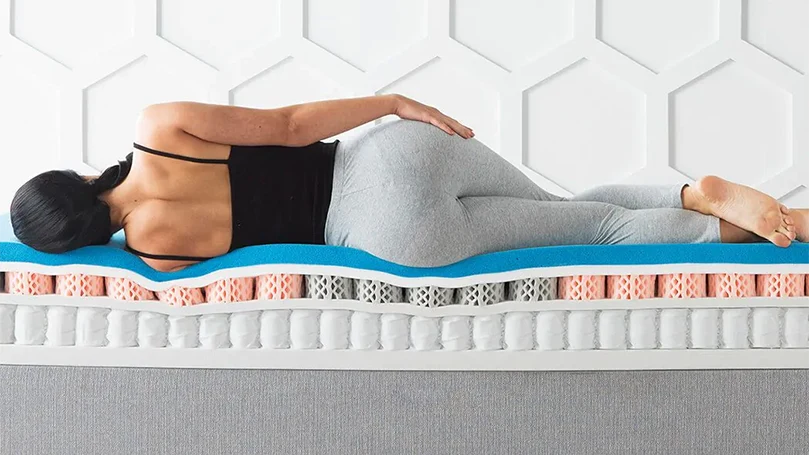
Sleep on side
If you want to reduce pressure on the lumbar spine, sleep on your side with your knees bent. To make this position more comfortable, place a pillow between your knees. Bending the knees helps the body reduce pressure on the spine. It is best to sleep on your left side if you have a problem with heartburn or are pregnant.

Bend forward slightly
You need to ensure a good position of the spine and not to put pressure on the joints. Place a pillow between your knees to keep your hips in a good position and bend forward slightly. Changing the habit of sleeping position is a long-term process, but it takes at least a month for the first changes.
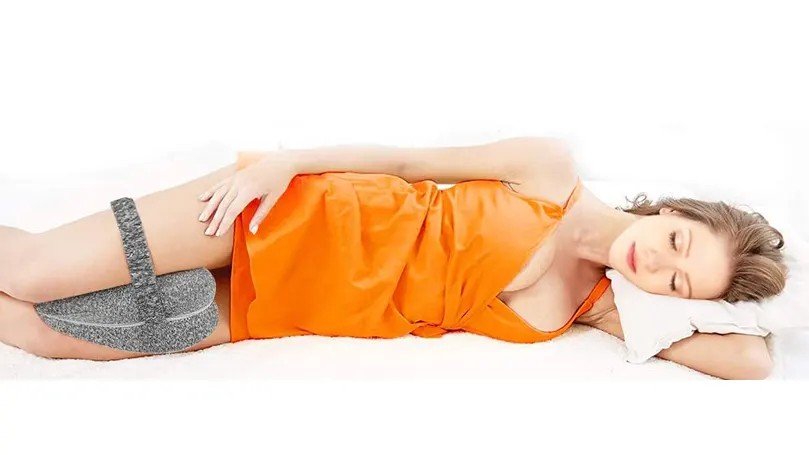
Stomach sleeping if your back hurts a lot
If you cannot sleep on your back because you have intense pain, sleep on your stomach. Place a smaller pillow under your stomach or hips. The head should not be placed too high. Experts do not recommend this pose, as the spine moves out of its neutral position. In this way, you increase the pressure on the nerve and increase the intensity of the pain.
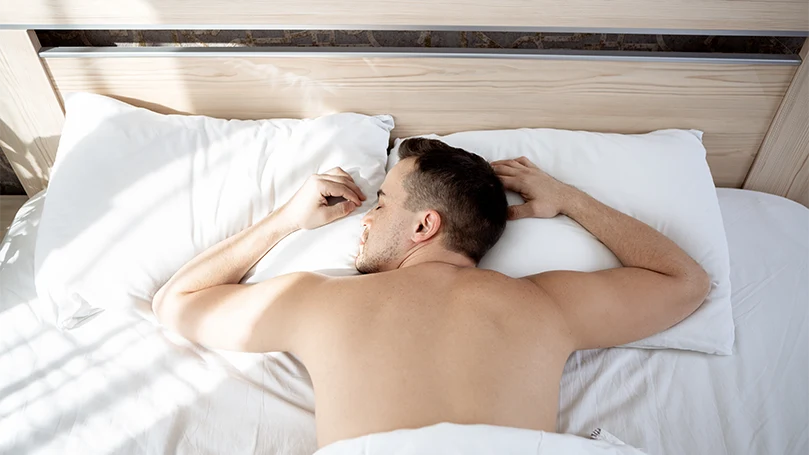
Keep the knees elevated
To keep the hips in a neutral position, you need to keep the knees raised enough. This means that the choice of knee pillow is a very important item. Choose only quality filling such as memory foam. Their features perfectly match the sleeper's needs. Then, choose the appropriate thickness of the pillow according to your weight.
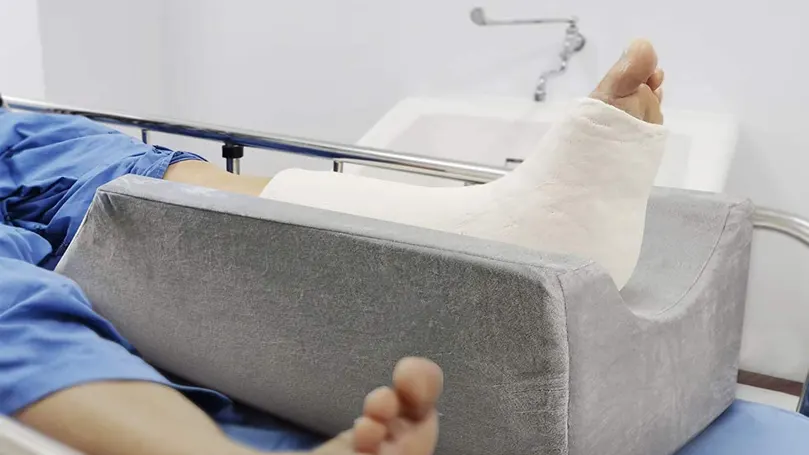
Pillow between the knees
Make sure to position the pillow correctly so that it does not move during the night. Depending on your sleeping position, place it right between or below your knees. Buy one with an adjustable strap, as this will keep it from moving throughout the night and prevent you from changing your sleeping position.
Related Reading:
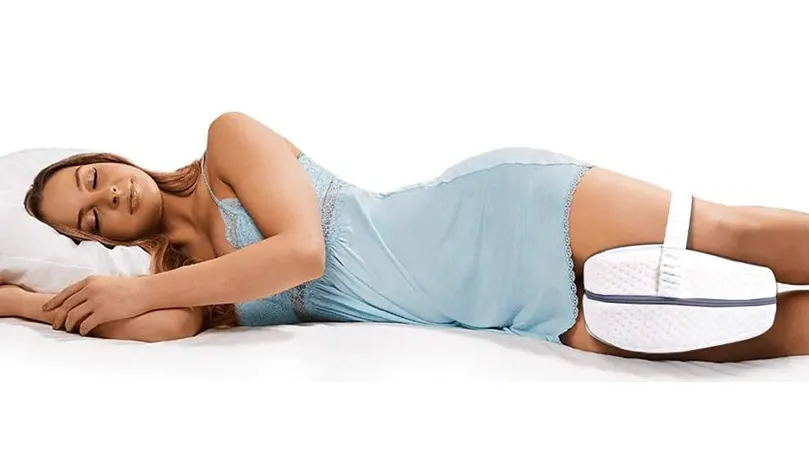
Why does sciatica pain get worse at night?
The symptoms can worsen during the night, and the reason is the great pressure on the irritated nerve. The main culprit for this is a bad sleeping position. In an attempt to rest, you are only putting additional stress on the nerve with the incorrect position of the body. In many situations, it is precisely this bad habit that is responsible for the development of it. The sciatic nerve is the longest and thickest nerve in the body, and it starts from the spinal cord, passes through the hips and buttocks, and spreads along the leg. If you want to minimize pain, find a sleeping position that maintains the natural alignment of your spine.
Conclusion
Sciatica and back pain can have a devastating effect on sleep quality. Doctors advise patients to keep the position in which there are no sciatic pain so they can fall asleep. The ideal position is to sleep on your side, on the side where there are no symptoms.
In this way, you will reduce the pressure on the irritated nerve. It is important to place a knee pillow between the knees to keep the pelvis and spine in a neutral position. Choose a pillow with a strap, to prevent the pillow from turning on its side during the night and moving.

You should always see a doctor when you have pain. He or she will be able to recommend pain relievers or some creams. Also you may get professional medical advice to try with some types of massage therapy or visit a physical therapist to work on improving your sciatica and thus promoting sleep quality.


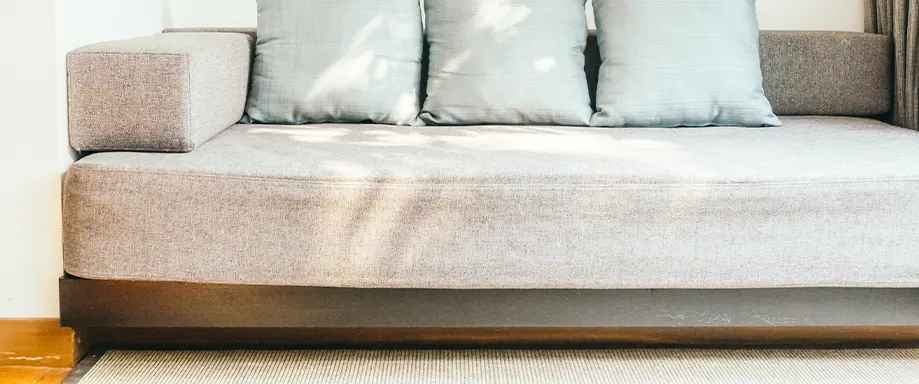












There are no comments yet
"*" indicates required fields